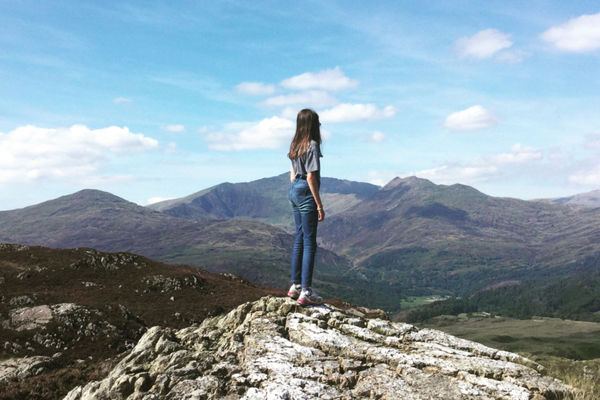Climb a mountain
Hike a nearby hill or small mountain with adult supervision, plan the route, pack snacks and water, practice safe climbing and navigation skills.



Step-by-step guide to climb a mountain
Basic Skills for Mountain Climbing - How to Climb a Mountain
Step 1
Choose a nearby hill or small mountain to hike.
Step 2
Ask an adult to accompany you on the hike.
Step 3
Check the weather forecast for the day of your hike.
Step 4
With an adult, study the trail map.
Step 5
Pick a clear route on the map to follow.
Step 6
Decide a turn-back time with the adult so you know when to head home.
Step 7
Pack your backpack with water snacks map compass hat sunscreen first-aid kit and whistle.
Step 8
Put on comfortable shoes layered clothing and your sun hat.
Step 9
Tell a friend or family member your planned route and expected return time.
Step 10
Do a two-minute warm-up of gentle stretches before you start.
Step 11
Start hiking on the planned route.
Step 12
Walk at a steady pace to save energy.
Step 13
Use three points of contact on steep or slippery sections.
Step 14
Every 15 minutes check your position on the map with the compass with the adult.
Step 15
Share your finished creation on DIY.org by describing your hike what you saw and how you felt.
Final steps
You're almost there! Complete all the steps, bring your creation to life, post it, and conquer the challenge!


Help!?
What can we use instead of a compass or paper map if we can't find them?
Use a smartphone with an offline trail-map app and GPS as a substitute for the paper map and compass, and save a screenshot or printout in your backpack as a backup.
What should we do if the trail becomes slippery or the child gets tired?
On steep or slippery sections follow the instruction to use three points of contact, slow to a steady pace and take short rest breaks, and if you feel unsure of location stop and check your position on the map with the compass as the adults do every 15 minutes.
How can I adapt the hike for younger children or older kids?
For younger children choose a smaller nearby hill, shorten the planned route and turn-back time and have the adult carry heavier items in the backpack while older kids can study the trail map, pick a clear route and practice checking position with the compass every 15 minutes.
How can we enhance or personalize the hike beyond the basic instructions?
Turn the hike into a nature-scavenger hunt or photo journal by packing a small notebook to record what you saw and how you felt, take photos along the route, and then share that finished creation on DIY.org as the instructions suggest.
Watch videos on how to climb a mountain
Teaching Kids Rock Climbing - Introduction
Facts about hiking and outdoor safety for kids
🥾 A good pair of hiking boots helps protect ankles and reduce slips on rough trails.
🚑 Basic wilderness first aid—treating blisters, sprains, and hypothermia—can be lifesaving on hikes.
🥪 High-energy snacks like nuts, trail mix, and dried fruit are favorites for keeping hikers fueled.
🗻 Mount Everest is the tallest mountain on Earth at about 8,848 m (29,029 ft).
🧭 Orienteering began in Sweden as military training and is now a global sport using maps and compasses.
How do I hike a nearby hill or small mountain with my child?
What materials do I need to climb a small mountain with kids?
What ages is hiking a hill or small mountain suitable for?
What safety tips should I follow when hiking a small mountain with my child?


One subscription, many ways to play and learn.
Only $6.99 after trial. No credit card required


